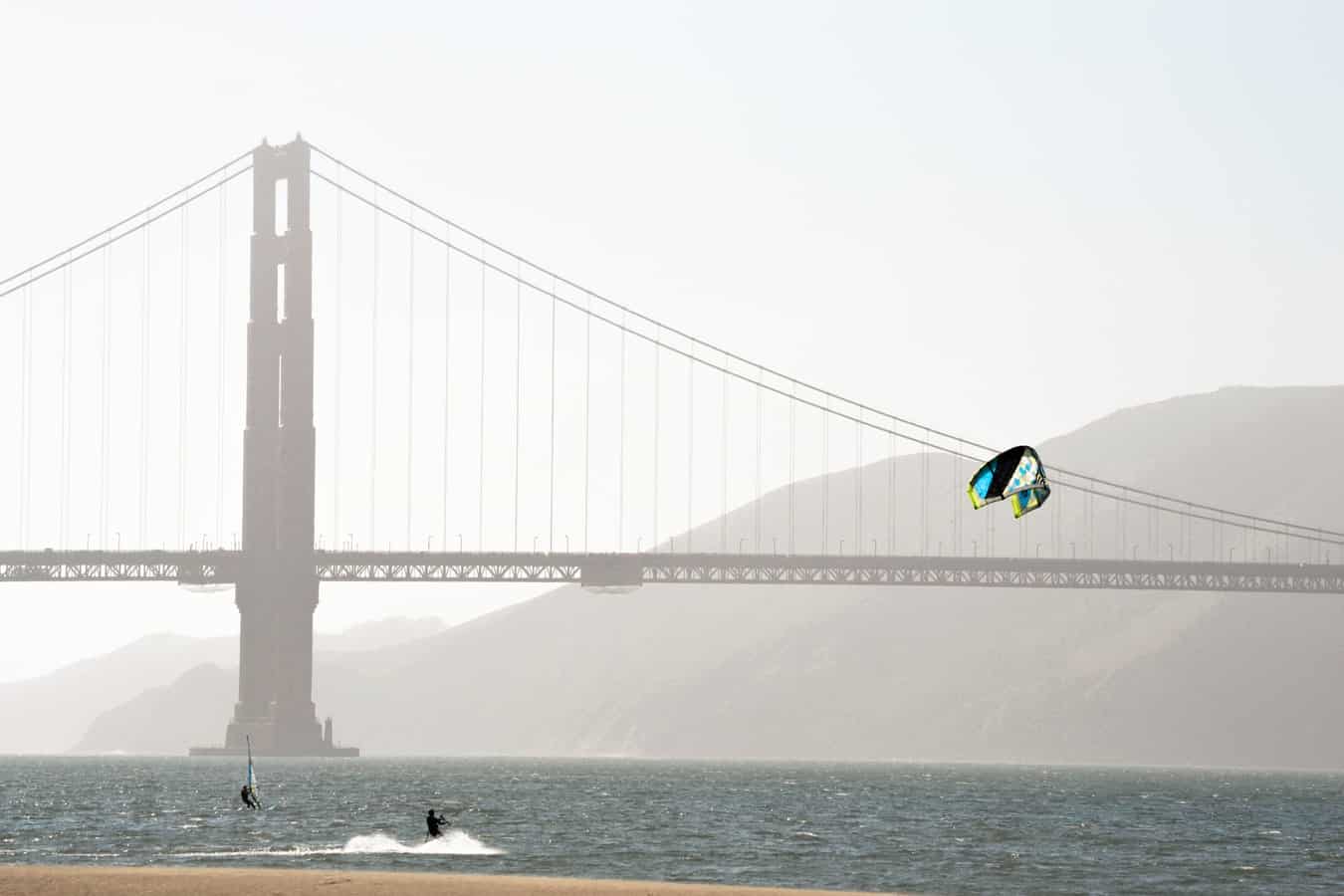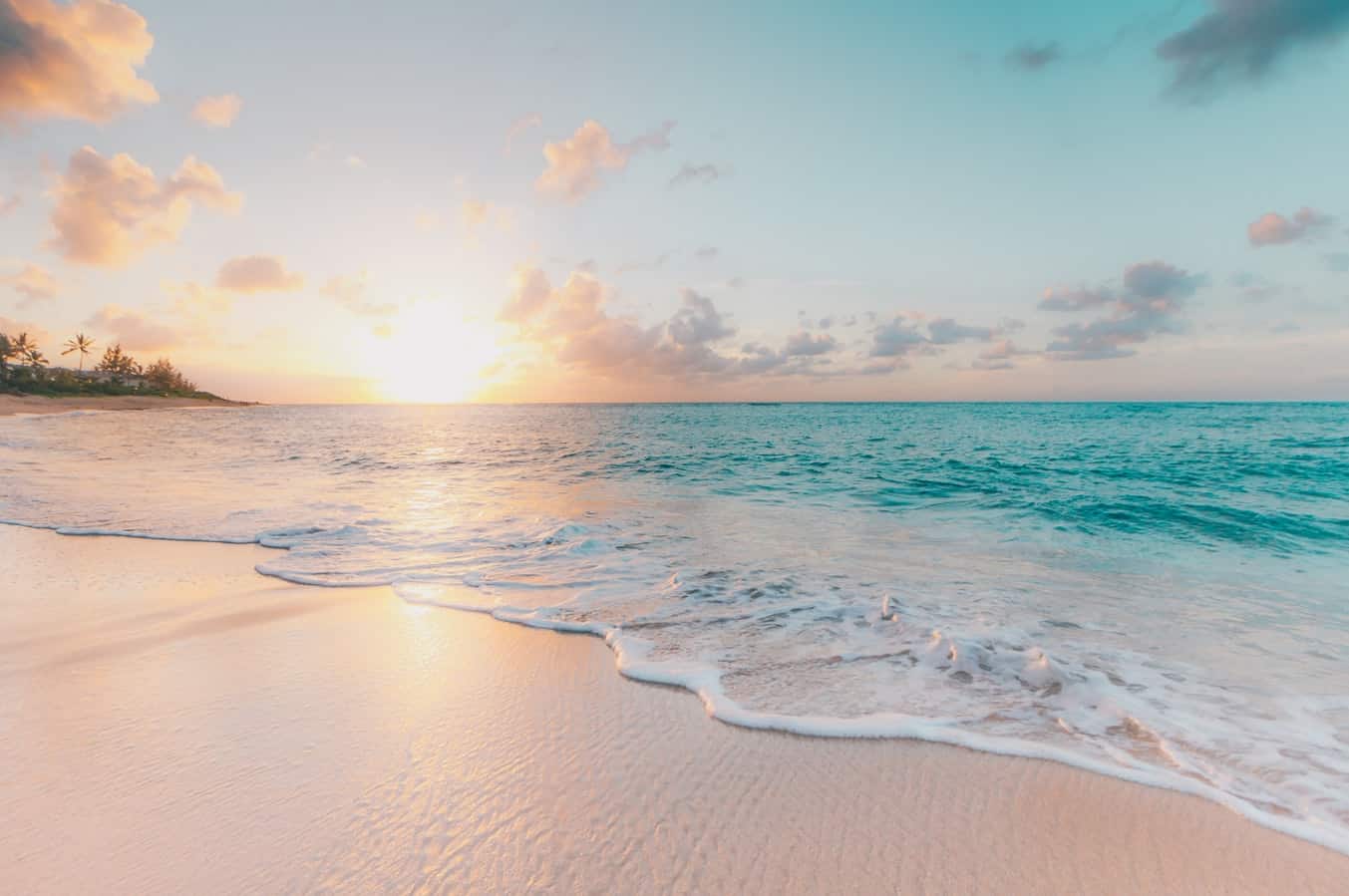Is It Possible To Surf Without Waves?
A surfer paddles as fast as he can towards a rapidly approaching 15-foot wave. Just in time, he reaches it as it crests, pops up standing on his surfboard and rides it down as it heads towards the beach. This is the way most of us imagine what surfing is or is meant to be. But is this definition of surfing the same around the world as it is here?
Is it possible to surf without waves? Yes, it is possible to surf without naturally-occurring waves and even possible to surf without any waves at all. Surfing involves standing atop a surfboard, and in different kinds of waters besides oceans with waves, one can surf . Of course, it’s also possible to surf on a wave generating machine that you can use if you don’t live near an ocean, or simply want to practice balancing on the surfboard.
What Are Some Ways You Can Surf Without Waves?
When we talk about surfing without waves, we are referring to waves that are surfer’s waves. In a body of water like a lake or a stream, you won’t get that far if the water’s surface is calm and still. There needs to be some kind of disturbance on the water to give you the traction you need to move the surfboard, and it doesn’t have to be a wave.
Surfing behind a speedboat (Wakesurfing)
Just like people who water ski behind a boat, you can surf behind a boat too, in its wake. Boats create ripples as it moves through the water and the faster the boat moves on the water the more water displacement occurs. Depending on the size of the boat and the speed of the boat, you can surf freestyle in a boat’s wake.
Kitesurfing
Instead of waiting for a wave to propel surfers across a body of water, they can also move by the power of the wind.
Harnessing wind power, kitesurfing involves using a kite with a large parachute to move across the water while riding a small surfboard or a wakeboard.
No waves are needed for kitesurfing, only the wind. The best kitesurfing is done on flat water locations for the best freestyle surfing. The smoother the water, the less resistance there is against the wind to propel a surfer forward.
Surfers can surf in midair as well, go back down upon the water, then back up again.
Surfing in Landlocked Munich, Germany
There is a phenomenon that occurs in the Eisbach River in Munich, Germany during the wintertime. At one moment the river is calm and the next, a giant wave barrels through where expectant surfers, surfboards in hand, wait for the right moment to jump into the water just ahead of an oncoming wave.
Germany has no oceans, so the Eisbach river phenomenon attracts hundreds of residents and travelers to the spot to simulate riding ocean waves.
There’s no time to paddle to the waves in the river, so inexperienced surfers shouldn’t try surfing the Eisbach. As soon as you hit the water, you are riding the wave so you must be prepared.
Surf using an electric surfboard
Using a handheld device, you can control the speed and direction on a surfboard without using any waves.
A surfboard has been designed that uses battery power to move you along in the water. One model is shaped like a longboard and is intended to be used by serious surf enthusiasts. Another model is box-shaped and is intended for use by those who are beginners at surfing.
Hydrofoil Surfing
Foil surfing uses a surfboard whose fin has a completely different design. The goal of this kind of surfing is to be able to glide smoothly over the surface of a body of water without waves.
A hydrofoil is a long fin that’s designed for rapid movement through water that has wings. The hydrofoil reduces the effect of wind on the water’s surface. It helps reduce friction so surfers can attain an angle of 90 degrees within a space of 1 second.
The hydrofoil’s structure is made from a combination of steel, fiberglass, and aluminum. It lifts the surfboard out of the water and doesn’t require high speeds.
Some people believe that foil surfing is surfing’s future, except for purists. However, foil surfing is also a part of regular wave surfing, except it eliminates the need to paddle and approach the wave.

Can Surfing Without Waves Be Called “Surfing?”
The answer depends on how one defines surfing. One dictionary defines surfing as a sport that involves riding the surf using a surfboard. By this definition, it can be said that surfing the Eisbach River is surfing, and so is riding behind a boat, as well as kitesurfing.
Another dictionary says that surfing is a pastime where you ride a wave on the surfboard to the shore. This narrower definition would make one conclude that surfing without waves isn’t surfing at all but are “other pastimes” instead.
Major publications like National Geographic, in major articles, write that surfing is based on the science of hydrodynamics. Hydrodynamics is the study of forces that act on water and the motion of fluids and how they act upon solid bodies, like a surfboard.
This definition does not mention waves at all, and the study of hydrodynamics could apply to someone surfing behind the back of a boat.
We can say, though, that kitesurfing is not the same as traditional surfing, in the sense that it involves wind energy, which is a different branch of research as hydrodynamics, although water resistance is involved in kitesurfing too.
How Does Kitesurfing Work?
Kitesurfing harnesses wind power through a parachute, usually a large one, to propel a surfboard rider across a body of water. Surfers can also use kiteboards instead of a traditional surfboard.
Kitesurfing has become popular in the past decade, in large part because several professionals surfers kitesurf and have popularized it for other surfers.
Waves are not needed, and in fact, the flatter and smoother the surface of the water, the better kitesurfing experience you will have.
Surfers can surf on a body of water or can surf in the air. Kites that have inflatable tubes are used to produce the wind pull. These inflatable tubes help to hold the shape of the kite and also permits the kite to float when it hits the water. The inflatable tubes allow the kite to be airborne again once it’s re-launched form the water.
There are beginner, intermediate and advanced kites that are made and used depending on the surfer’s experience. The more advanced kites can help surfers move much faster on the water than the beginner level kites.
The surfboards used, also called kiteboards, are symmetrical in shape and are designed to allow the surfer to make sharp turns in direction while being pulled across the water by the kite.
Kitesurfing today can be performed no matter what kind of wind force is available. This is due to the wide variety of kitesurfing equipment available.
What Kinds Of Health Benefits Come From Kitesurfing?
Kitesurfing requires the whole body to be used. The legs control the kiteboard and act as the resistance against the wind power the inflatable kit creates. The muscles of the torso, or the core, as well as the arms, hold onto the kite so you can stay balanced. Your hands grip onto a long handle attached to cables that are then affixed to the kite above.
Once in the water, a harness attached to the body takes over and helps to lessen the physical investment in kitesurfing, so you can kitesurf for hours.
Related Questions
What Prepares You Best For Wave Surfing?
Most of the ways you can surf without waves will prepare you for when you hit the ocean for wave surfing.
River surfing, for example, is riding over changes in the water when the river dips. Near these crevices in the river, the speed of the water increases so you must be able to hold on and manage to ride the small declination until you go past and resume on the flat water surface.
Wakesurfing, or surfing behind a boat, helps you to practice standing on a surfboard while the board moves inside and around the wake created by the boat. Depending on the speed of the boat, wakesurfing becomes more challenging the faster the boat moves, creating larger and less predictable wakes.
Even surfing on an electric surfboard helps you practice standing on a surfboard, and you can increase speed to test your abilities to remain vertical atop a surfboard.
Will Wave Surfing Become Obsolete?
Professional surfers have tried kitesurfing and surfing in the Antarctic after the ice breaks off a glacier, creating turbulent waters. But even these pros believe that traditional surfing will always be with us.
There is nothing that can ever replace the feeling of riding a wave. One of the reasons is because of the skill involved with catching big waves and riding them for what seems like an eternity. We need challenges, so electric surfboards will never completely replace wave surfing.
Is Surfing Without Waves More Challenging Than Wave Surfing?
The skill involved with kitesurfing is different – but not more challenging, than wave surfing. It is just like flying a kite and holding it, except the kit harnesses wind power much better than a regular kite.
Surfing in the Eisen River in Munich is meant for experienced surfers because there is not paddling involved. An experienced eye is needed to know the exact moment when to hop on the wave with a surfboard.

